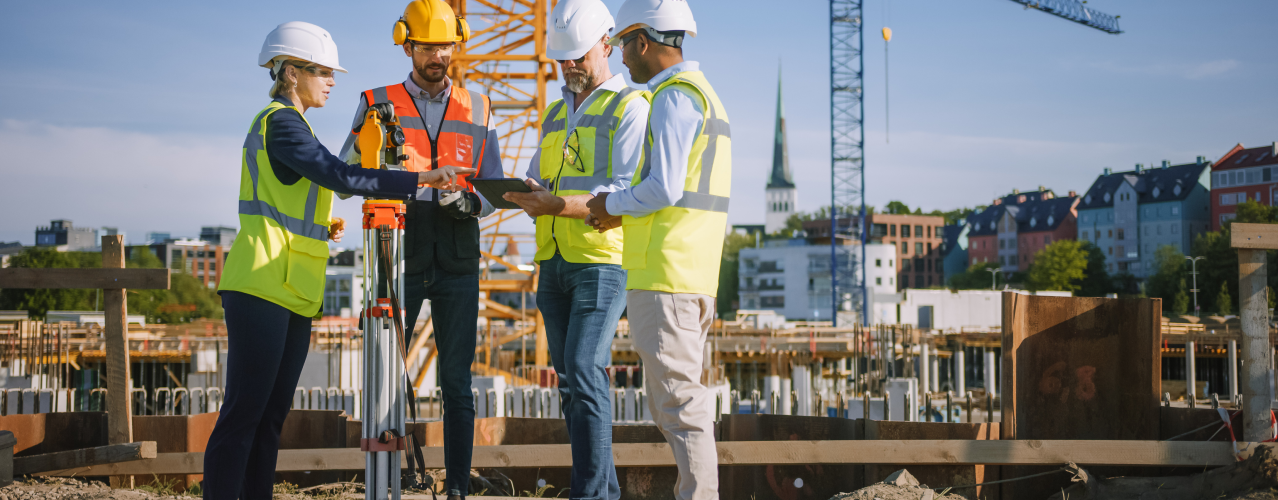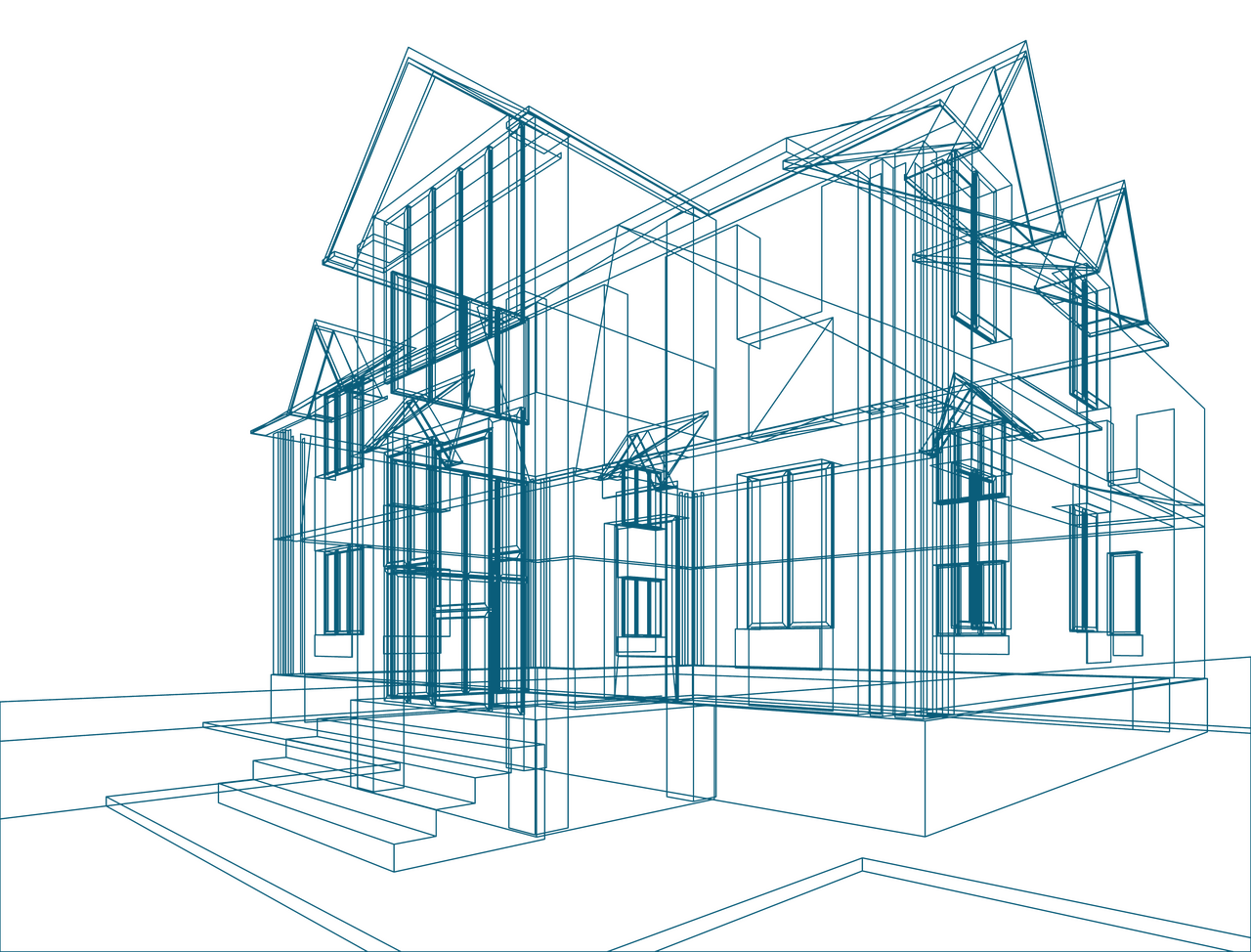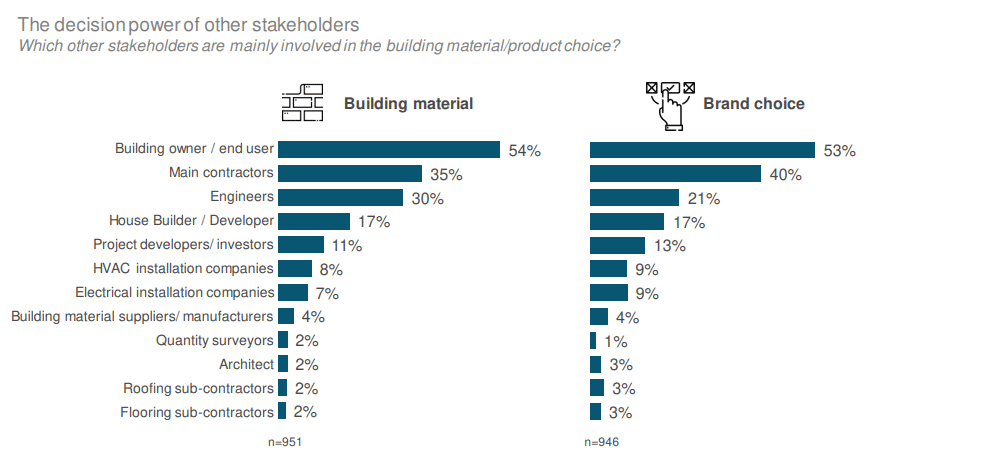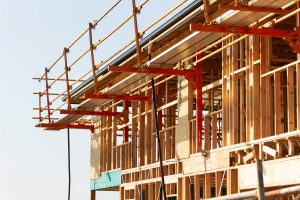


News I published 15 February 2023 I Dirk Hoogenboom
Building Construction Decision Making: Who’s in Control?
The process of designing and constructing a new building can be rather complex due to the number of different parties involved. The architect used to be the most important decision-maker throughout that process, especially regarding material choice. However, the central role of the architect is not a given anymore.
The role of the architect has been changing over the years. Other parties have been gaining influence on the decision on materials and brands to be used. To reach those target groups as well, manufacturers and brands of construction materials have to adjust their marketing.
But who are these ‘other parties’ that influence decisions in the design and construction process of new buildings? The answer can be found in the report of USP Marketing Consultancy’s European Architectural Barometer, which focuses on decision-making in the construction process. According to architects from eight European countries, building owners and main contractors are the most important co-decision makers.
The Influence of Building Owners and Main Contractors on Material and Brand Decisions


On average, building owners and main contractors are considered the most important stakeholders when deciding on both materials and brands. There are some significant differences per country, however.
Looking at brand choice for certain building materials, for instance, 78 % of architects in the Netherlands say main contractors are the main stakeholders. In Germany, on the other hand, only 9% of architects mentioned main contractors. In Germany and the UK, building owners or end users are the most important stakeholders when choosing the brand for building materials, as mentioned by 76% of architects.
Digitalisation’s Impact on Co-Decision Making in Building Construction
We have seen main contractors gaining influence in the design and construction process for a while now. This trend is especially apparent in the Netherlands and Belgium. The increasing involvement of building owners is a more recent development that is most visible in Germany, the United Kingdom and Italy.
Although there are many ways to explain the rising influence of these parties, digitalisation is a major underlying factor for both. On the one hand, there is the digitalisation of the construction process, for instance in the form of Building Information Modelling (BIM). This allows executing stakeholders like main contractors to be involved in earlier stages of the design and construction process.
On the other side, numerous digital sources allow building owners to easily find solid and relevant information on construction materials, systems, their implications, and the brands producing them. As a result, building owners can be well-informed decision-makers, instead of leaving most decisions on materials and brands to architects.
The Future of Building Construction Decision Making: What Manufacturers and Brands Need to Know
We expect parties other than the architects to continue gaining influence at earlier stages of the construction process. That is partly based on the above connection with the digitalisation of the construction sector, but also on other trends.
Technological development of materials and systems causes buildings to be increasingly complex. Architects cannot be specialised in every technical aspect of a building. That means that they will have to rely on specialists like engineers more often, who will consequently gain influence on brand decisions. At the same time, technological developments create more options for building owners, meaning they will have more decisions to make at the start of the design process as well.
For manufacturers and brands of construction materials and systems, it is very important to keep track of these changing roles and influences of stakeholders in the construction process. Knowing who influences the brand decision for your product group will allow for effective and efficient marketing strategies. For a full overview of the changing decision-making units in building construction, we refer you to the 2022 report of USP Marketing Consultancy’s European Architectural Barometer.
Also, read our blog for more info about trends that are shaping the future of construction industry

Read more


26 July 2024 I Dirk Hoogenboom
Building Materials Trends for 2025


16 October 2024 I Henri Busker
The Building Blocks of Prefab: Key Materials


06 January 2025 I Dirk Hoogenboom
Branding in Construction and Home Improvement


24 September 2024 I Dirk Hoogenboom
Future Developments in Construction Still Far Away

Fresh Insights Await
Our relevant reports
Delve into the newest findings across various market segments, crafted for a cutting-edge overview. Explore our insightful reports, brimming with up-to-date data, trend analyses, and in-depth examinations, all tailored to provide you with a comprehensive understanding of the current market dynamics.
Construction
Home Improvement
Installation
Special reports
Construction
Smart Materials and Buildings Q4 2024
2024 85 pages
Explore the evolving future in construction sector among European architects in Q4 2024. Delve into the factors driving material preferences and the impact on construction aesthetics and sustainability.
2,000 Euro
Construction
Digitalisation and BIM H2 2024
2025 64 pages
Uncover the preferred purchase channels of contractors in H2 2024, and understand how purchasing behaviors evolved. This report provides insights into the factors influencing purchasing decisions among contractors.
6,000 Euro
Construction
Decision making process Q3 2024
2024 87 pages
Unveil the decision-making processes in the construction industry through the lens of European architects. Discover the factors that influence crucial decisions and the interplay among different stakeholders.
2,000 Euro
Construction
Prefab H1 2024
2024 63 pages
Discover the adoption rate and benefits of prefabrication technology among European contractors in H1 2024. Understand the driving forces behind prefab usage and its impact on project efficiency and cost-saving.
6,000 Euro
Construction
Future of construction Q2 2024
2024 82 pages
Explore the evolving future in construction sector among European architects in Q2 2024. Delve into the factors driving material preferences and the impact on construction aesthetics and sustainability.
2,000 Euro
Construction
Sustainability 2024
2024 72 pages
Painter Insight Monitor 2024 will focus on understanding the specific needs, preferences, and challenges faced by painters when it comes to sustainable products.
11,000 Euro
Home Improvement
DIY vs DIFM Q4 2024
2025 76 pages
Explore the prevailing trends between DIY and DIFM in Q4 2024. Understand consumer preferences and the factors influencing their choice between DIY and DIFM.
3,500 Euros
Home Improvement
Branding Q3 2024
2024 74 pages
Discover the power of branding in the home improvement sector. Explore how strong branding influences consumer preferences and purchase decisions.
3,500 Euro
Home Improvement
European Garden Monitor
2023 43 pages
Explore the European Garden Monitor, a comprehensive platform dedicated to garden health monitoring in Europe. Access valuable resources and expert advice today.
12,000 Euro
Home Improvement
Purchase channels Q2 2024
2024 90 pages
The European Home Improvement Monitor offers valuable insights on purchase channels in the European home improvement industry, examining the evolving preferences and behaviors of consumers across traditional retail and emerging online platforms.
3,500 Euro
Home Improvement
Sustainability Q1 2024
2024 81 pages
Delve into sustainability trends in the home improvement sector in Q1 2024. Discover consumer preferences and the shift towards eco-friendly home improvement solutions.
3,500 Euro
Home Improvement
DIY versus DIFM Q4 2021
2024 113 pages
This report is a must-have if you’re in the home improvement industry. It provides a wealth of information on the behaviour of DIY and DIFM consumers, their motivations, and the factors that influence their purchasing decisions.
3,150 Euro
Installation
Training needs Q1 2025
2025 100 pages
This report offers an overview of installers’ habits and preferences concerning their education. Furthermore, the report encompasses the pervasive challenge of workforce shortage and explores the sector’s strategies for resolving this issue.
3,250 Euro
Installation
Media orientation Q4 2024
2025 128 pages
The European Mechanical Installation Monitor report provides a detailed analysis of the plumbing and HVAC industry. This report specifically focuses on Media Orientation in the industry.
2,800 Euro
Installation
Services in the installation sector Q4 2024
2025 102 pages
This report provides a comprehensive view of the installer's requirements for services from manufacturers. Within the report, you will find information on the most needed services in each category: commercial processes, engineering, products & installation, and repair & maintenance. It also examines the services that installers offer to their customers.
3,250 Euro
Installation
Prefab Q3 2024
2024 110 pages
Uncover the adoption of prefabricated products in HVAC installations during Q2 2022. Delve into the benefits and challenges associated with prefabrication in HVAC.
2,800 Euro
Installation
Prefab Q3 2024
2024 119 pages
This report offers a comprehensive view of the installers’ involvement and needs regarding prefabricated electrical installations.
3,250 Euro
Installation
Smart & Connected Products Q2 2024
2024 120 pages
This report provides a comprehensive view of the attitudes of installers toward smart building solutions, specifically among electrical installers and their clients. In the report, you will find insights into the installers' experiences with installing smart products and the willingness of end users to invest in such solutions, as well as their motivations and pain points.
3,250 Euro
Special reports
European Sustainability Report 2024
2025 51 pages
This report provides in-depth insights based on triangulation of key market information and data as well as data from USP Marketing Consultancy’s key monitors that are carried out year in, year out. The focus of this report is on the most important stakeholders within the construction industry, namely architects, contractors, electrical and HVAC installers within The United Kingdom, The Netherlands, Belgium, Germany, Poland, France, Italy, and Spain.
3,950 Euro
Special reports
European Sustainability Report 2024
2024 51 pages
This report provides in-depth insights based on triangulation of key market information and data as well as data from USP Marketing Consultancy’s key monitors that are carried out year in, year out. The focus of this report is on the most important stakeholders within the construction industry, namely architects, contractors, electrical and HVAC installers within The United Kingdom, The Netherlands, Belgium, Germany, Poland, France, Italy, and Spain.
3,950 Euro









